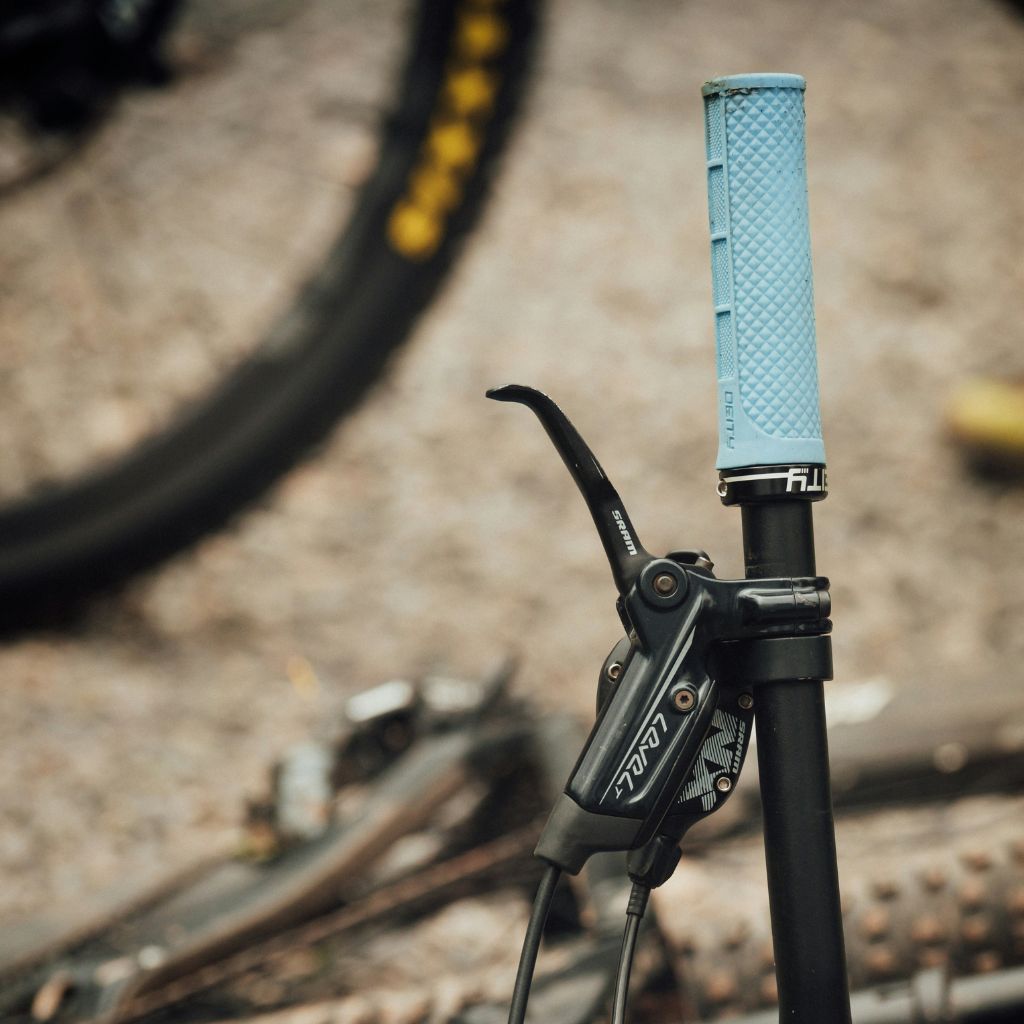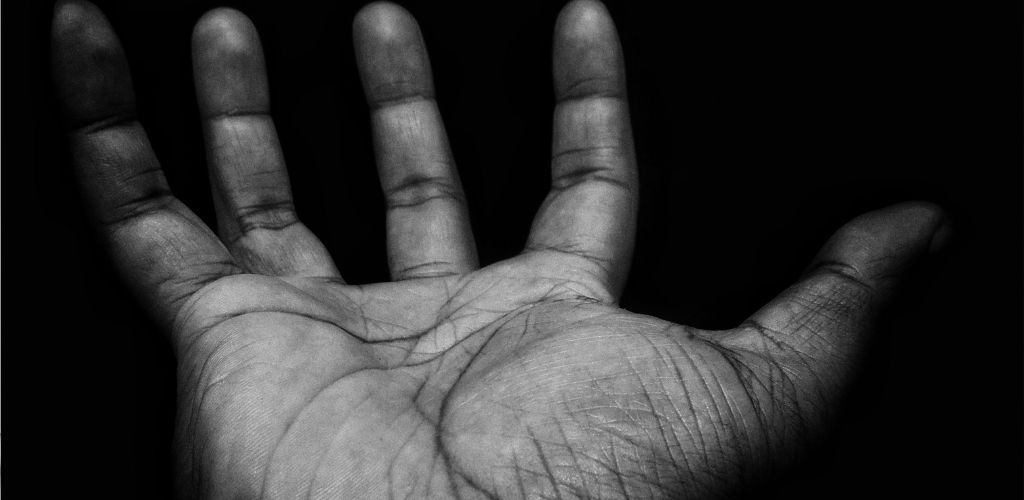Hand numbness following (or during) mountain biking is no fun. This condition, known as “cyclist’s palsy,” is usually a result of nerve compression in the hands due to prolonged pressure, vibration, and poor hand positioning.
Let’s jump into several key areas to address this issue and see what can be done to avoid it.
Proper Bike Fit and Ergonomics
The foundation of a comfortable ride is a well-fitted bike. An incorrect bike fit can lead to various issues, including hand numbness.
If the handlebars are too low or positioned too far forward, it causes you to lean excessively, increasing pressure on your hands.
Conversely, if they are too high or too close, it can lead to an unnatural hand position, straining the wrists.
When adjusting your bike, consider the following:
- Handlebar Height and Angle: Adjust the handlebars to a height where your wrists remain in a neutral position. This adjustment reduces strain on the nerves and tendons in your hands.
- Stem Length: A stem that’s too long can cause overreaching, placing extra weight on your hands. Conversely, a stem that’s too short may not allow proper weight distribution. (Most modern trail mountain bikes have shorter stems than they did 10 years ago).
- Seat Position: An improperly angled or positioned seat can cause you to slide forward or backward, altering how much weight is placed on your hands. The seat should be level or slightly tilted forward for mountain biking.
Remember, even minor adjustments can significantly impact comfort and ergonomics.

Grip Technique and Breaks
Gripping the handlebars correctly is vital in preventing hand numbness.
It’s common for riders to grip too tightly, especially on rough trails, leading to increased pressure and reduced blood flow. To combat this, maintain a relaxed grip. Your grip should be firm enough to control the bike but not so tight that it causes strain.
Changing hand positions on longer rides can help redistribute pressure.
Additionally, using your entire body to absorb shocks and vibrations, not just your hands and arms, is crucial.
Engaging your core and using your legs as shock absorbers not only reduces strain on your hands but also improves overall control and endurance.
Taking frequent breaks during long rides allows your hands to rest, and blood flow to normalize. During these breaks, stretch your fingers, hands, and wrists to relieve any tension.

Glove Choice and Handlebar Additions
Wearing the right gloves is crucial in reducing hand numbness. Gloves provide padding, reduce vibration, and protect your hands from blisters and the elements.
Look for gloves with adequate padding in the palm area, ensuring they aren’t too bulky, which can affect your grip. Gloves with gel padding are particularly effective in absorbing vibrations.
Additionally, consider your handlebar setup. Investing in quality handlebar grips can make a substantial difference.
Ergonomic grips, designed to fit the natural shape of your hand, can reduce pressure points and improve circulation.
When choosing grips, consider the grip diameter; grips that are too large or too small for your hand size can contribute to discomfort. Thankfully they’re not too expensive an item to test out a couple of different grip types to see if that makes a difference to your hand numbness from mountain biking.
There are a wide range of grip thicknesses available – some are sold as slim, and others as extra fat grips. And keep in mind that while most are made of some type of rubber, there are also alternative material mountain bike specific grips available too – such as foam, though these do tend to wear out faster, and can be torn by crashes more easily than the rubber grips.
Also – don’t forget that lock-on grips (such as the ODI lock-on grips I use) do have an inner plastic cylinder beneath the rubber grip, that helps clamp onto the handlebar – so switching to a push on grip from a lock-on grip (even of the same outer diameter) will give you slightly more thickness of rubber on the handlebar, which might help dampen vibration better for your hand.
Most mountain bikers do use lock-on grips these days, but it could be something worth trying if you’re really struggling with hand numbness from riding.

Body Conditioning and Technique
Overall body conditioning plays a crucial role in preventing hand numbness.
Strengthening your core, back, and shoulders can improve your riding posture and reduce reliance on your hands to support your upper body.
Regular exercises targeting these areas can enhance your endurance and bike handling, thus reducing the strain on your hands.
Additionally, focus on refining your riding technique. Learn to use your body weight effectively, especially when navigating turns or obstacles.
Proper weight distribution not only improves control but also minimizes the pressure on your hands.
Practice different techniques like standing up more on the pedals during descents or shifting your weight back when going over bumps. These strategies can help distribute the impact more evenly across your body.
Likewise, trying to maintain a relaxed grip of the bars when you’re riding at speed or over rough terrain, as opposed to “death-gripping” the bars might help as well. This is something that used to absolutely destroy my hands, grip-strength, and forearms after starting to ride many laps at a bike park for the first time.
I ended up changing to a fatter grip, concentrating on relaxing my grip more, and adjusting my suspension to handle better high-speed chatter over bumpy terrain, and found that really helped hugely.
Additional Considerations
- Hydration and Nutrition: Dehydration and nutritional deficiencies can contribute to muscle cramps and numbness. Ensure you stay well-hydrated and consume adequate electrolytes and nutrients during long rides.
- Handlebar Width: Too wide or too narrow handlebars can affect your shoulder position, subsequently impacting hand comfort. Ensure your handlebars are the right width for your body size and riding style.
- Suspension Settings: Properly tuned suspension can absorb much of the trail’s roughness, reducing the impact on your hands. Regular maintenance and adjustments based on terrain can aid in comfort.
- Regular Bike Maintenance: A well-maintained bike ensures smoother rides. Regularly check and maintain components like the headset, brakes, and tires to reduce unnecessary vibrations and jolts.
- Professional Bike Fit: If you’re struggling to find the right setup, consider a professional bike fit. This service can provide personalized adjustments based on your body’s biomechanics, significantly enhancing comfort.
The bottom line…
Addressing hand numbness in mountain biking involves an approach that includes bike ergonomics, grip technique, appropriate equipment, body conditioning, and overall riding technique.
Small adjustments and awareness of your body’s responses during riding can lead to significant improvements in comfort and performance.
Remember, every rider is unique, so what works for one person may not work for another. Continual experimentation and adaptation are key to a comfortable and enjoyable mountain biking experience.
See you on the trail!

